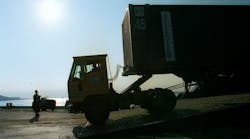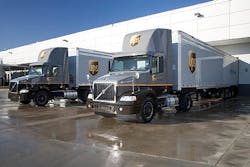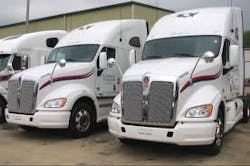Kathy Bostjancic, director for macroeconomic analysis for the Conference Board, applied that sobriquet to her most recent economic forecast following the announcement from the U.S. Bureau of Economic Analysis that U.S. gross domestic product (GDP) growth only inched up 1.5% in the second quarter this year – quite a slide from the 4.1% GDP rate reported in the fourth quarter of 2011 through the revised 2% GDP growth pegged for the first quarter this year.
“U.S. economic growth has slowed to a crawl,” Bostjanic declared (rather brutally). “Given the anemic pace of consumption and investment, plus continued austerity for state and local government spending, and weak exports, it is difficult for the domestic economy to produce at a more robust pace.”
Moreover, she added that there are “negative headwinds” developing from Europe – where the oft-discussed sovereign debt crisis continues to play havoc with governments and bankers alike – as well as from the Asia/Pacific region, especially China, which is suffering from stuttering economic growth, too.
“The continued tension between slow wage growth and modest profit growth in a weak economic environment will result in a shortfall in demand, perhaps right through the end of the year,” Bostjanic said. “The Federal Reserve may unleash another round of quantitative easing soon, but the real question is how much positive impact it will have amid a backdrop of ongoing household deleveraging.”
“Deleveraging,” by the way, is the technical term for reducing debt. So when economists say households are “deleveraging,” they mean families are rerouting their cash flow to pay off debt versus buying consumer goods. Businesses are also doing the very same thing; putting off hiring workers, delaying investments in equipment, and hoarding cash.
All of that, ofcourse, leads to reduced economic growth and thus a corresponding decline in freight volumes.Indeed, Bob Costello (at left), chief economist with the American Trucking Associations (ATA), lowered his trucking tonnage growth forecast for the remainder of 2012 to between 3% and 3.5% because of what he calls the “recent economic weakness” in the U.S.
For example, even though the ATA noted its for-hire truck-tonnage index jumped 1.2% in June, it barely offset a 1% decrease in May – an indication that freight continues to flow unevenly in during the “Great Muddle Through.”
“June's increase was a pleasant surprise, but the lower year-over-year gain fits with an economy that has slowed,” Costello noted, adding that he’s concerned about businesses sitting on cash instead of hiring more workers or spending it on capital as they remain worried about (no surprise here) the sovereign debt issues plaguing Europe and the U.S. “fiscal cliff” of tax hikes poised to go into effect at the start of 2013.
That’s not to say everyone is down in the dumps, I stress. Indeed, in the Q2 2012 Manufacturing Barometer survey conducted every quarter by global consulting firm PricewaterhouseCoopers(PwC), the majority of 60 executives at major U.S. industrial manufacturers in the poll remain optimistic regarding prospects for the U.S. economy, though their sentiment about the global economic outlook continues to weaken.This is important as manufacturing drives a lot of freight into trucking’s trailers – and Bobby Bono (at right), newly-installed U.S. industrial manufacturing leader for PwC said the survey responses indicate that overall revenue projections among U.S. industrial manufacturers remain positive, with 88% of those polled expecting revenue growth at their own companies and only 5% expecting negative results. Furthermore, 87% of respondents said they were planning increases in operational spending in the year ahead.
“Despite the perception by some of the increasing challenges globally, sentiment regarding the direction of the U.S. economy among U.S. industrial manufacturers remained positive during the second quarter,” Bono noted.
“Overall spending plans remain healthy with a focus on new product introductions in the face of a competitive environment across multiple sectors,” he added. “However, we are seeing some moderation in planned outlays for research and development, as well as geographic expansion, which may portend a more conservative approach given worldwide economic conditions.”
That “conservative approach” is taking hold among freight transportation providers, too, despite ongoing improvements in their profits margins.
Take a look at United Parcel Service, for example. Big Brown’s fiscal metrics all went up in the second quarter this year, with total revenue rising to $13.35 billion, operating profit to $1.79 billion, and a nice uptick in overall margin to 13.4% from a revised 13% during the same quarter of 2011.Indeed, UPS’s domestic operations did really well – offsetting a downturn in international business – with the transportation conglomerate’s domestic revenue increased 4.1% over the prior-year period, driven by a 3.5% gain in package volume. Operating profit jumped more than 12% over 2011 adjusted results, while its operating margin expanded 100 basis points to 14.1%, aided by volume growth, improved efficiency, higher base rates and a benefit from the timing of the fuel surcharge.
Yet even with all that good news, Scott Davis, UPS’s chairman and CEO, sounded some very sour notes in the company’s second quarter earnings report.
“Increasing uncertainty in the U.S., continuing weakness in Asia exports and the debt crisis in Europe are impacting projections of economic expansion,” he explained, adding that looking toward the second half of the year, customers are more concerned as greater uncertainty exists, with economic growth expectations declining.
“The company’s performance was mixed during the second quarter,” Kurt Kuehn, UPS’s CFO pointed out. “The results in our U.S. domestic, supply chain and freight segments were partially offset by the weakness in international [operations]. Consequently, we are reducing our guidance for 2012 diluted earnings per share to a range of $4.50 to $4.70, an increase of 3%-to-8% over 2011 adjusted results.”
Indeed, this interesting dichotomy is occurring at pure trucking firms as well – where strong revenues and profits are noted on the one hand, while a cautious outlook gets displayed by the other.“The financial results of the second quarter of 2012 marked our best financial performance in several years, [yet] the pace of economic growth remains uncertain and the driver market is extremely tight,” noted David Parker, chairman, president and CEO of Covenant Transport. “We believe the trucking economy's freight demand and capacity remain closely in balance [as] regulatory issues, increasing costs and the tight driver market has limited trucking capacity.”
This from a TL carrier that reported a very small increase freight revenue of $134.2 million in the second quarter – an increase of 0.4% compared with the second quarter of 2011 – while its net income soared to $4.3 million, well over double its net income of $1.7 million in the same period last year.
Then again, Covenant – like most U.S. businesses these days – is being cautious, trying not to let a healthy spike in one fiscal quarter unduly influence the view of the economic conditions that lay ahead. Perhaps that will prove to be the smart way to survive and thrive during the “Great Muddle Through” in the months ahead.








